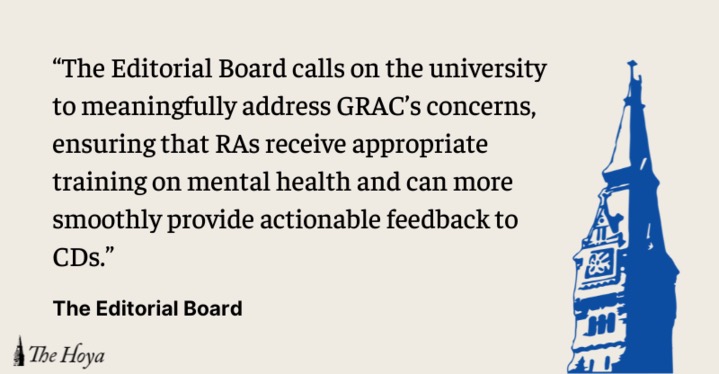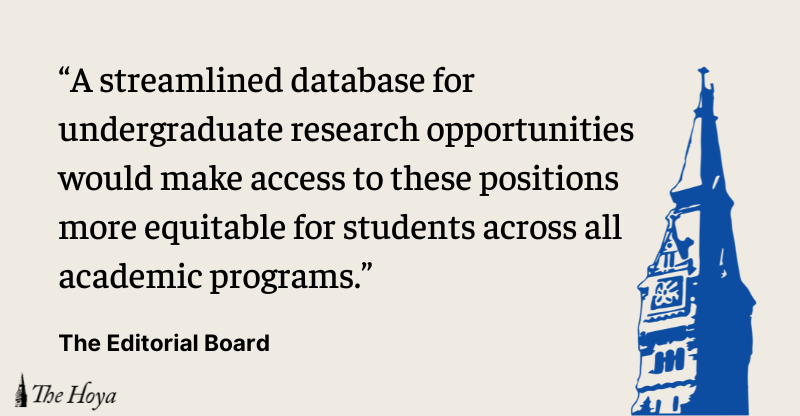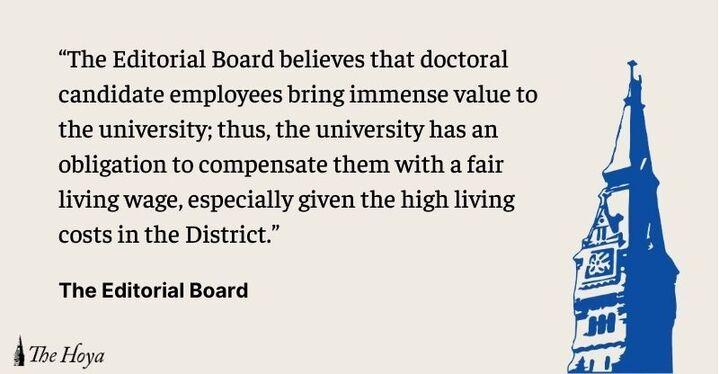There’s no doubt that for many incoming students, the premier location of Washington, D.C., is a definite draw. Yet the District is swiftly becoming more of a deterrent than anything else. As D.C. commissioners work to eliminate university life, they are ignoring everything our campus has to offer.
While the rest of the country tightens its belt to accommodate the economic downturn, the nation’s capital is no different. In a controversial move Tuesday, the D.C. Council approved an exorbitant 8.95 percent income tax rate for residents earning more than $350,000 annually. Yet below-par revenue projections will likely lead the council to search for other sources of income, and it seems like college students are next on the chopping block.
The threat comes in the form of PILOT, or payment in lieu of taxes. Under current D.C. law, nonprofit, private universities are exempt from paying property taxes. The council could possibly tap into universities as a new source of the funds they need. The PILOT program would force universities to pay for the impact of their students on municipal services — with the understanding that such fees would be cheaper than regular property taxes. One variant of the program has Georgetown paying a $100 fee for each student enrolled in the university per semester rather than sending an assessor to estimate the value of Healy Hall for property taxes.
A major proponent of the program, Councilmember Mary Cheh (D-Ward 3), drew inspiration from a similar program in Boston. In 2009, the city successfully initiated the collection of voluntarily negotiated payments from tax-exempt organizations such as Harvard University and Massachusetts General Hospital with more than $15 million dollars in property assets.
Unlike in Boston, the current proposal in the District would be mandatory and is aimed directly at private universities. It is estimated that Georgetown could pay close to $1.25 million, which is less than the estimated $14 million we could pay in property taxes.
The D.C. Council believes that students should pay the same dues as any Georgetown resident. But this is no fair exchange; rather, it is a case of taxation without representation.
Redistricting efforts for the local advisory neighborhood council began in earnest this summer as a task force led by community leaders drafted a proposal to redraw council districts. Advisory Neighborhood Commission Representative Ron Lewis, President of the Citizens Association of Georgetown Jennifer Altemus (COL ’88) and President of Burleith Citizens Association Lenore Rubino chaired the effort. No member of the Georgetown University Student Association was offered a position as a co-chair.
Georgetown students will be underrepresented on the ANC for the next decade if the plan from the redistricting commission, overwhelmingly comprised of non-student residents, is approved. If students make up 45 percent of the population in the ANC, shouldn’t they have more than 25 percent of the council seats?
Unfortunately, the proposal has moved on to the chair of the ANC redistricting efforts, who has two options: Forward the plan with its blatant flaws to the D.C. Council or send it back to ANC2E asking for changes. Clearly, the latter would be the right choice of action.
The ANC and the D.C. Council must recognize the pure economic benefit of having students in the neighborhood. Students provide a great base of employment for these businesses to hire from, while also driving up property values District-wide with the large demand for off-campus housing.
Aside from these tangible benefits, the university is also trying to accommodate members, meeting their concerns head on. It has already removed controversial items off its Campus Plan agenda, including the proposed housing residence in the 1789 block and a loop GUTS bus route. It is currently planning a barbecue on the front lawn for students to mingle with neighbors and has instituted a new shuttle for weekend nights for students to reduce noise levels.
The university itself has largely proved a boon for the greater D.C. area, topping the D.C. Comprehensive Annual Financial Report rankings as the number one employer of District residents last year besides the government. When Georgetown students do leave the confines of the 37th and O Streets, it is often to make a positive impact on the city.
Hoyas Outreach Program and Education and Georgetown University Math & Science Hands-On Enrichment are volunteer-run efforts dedicated to helping the impoverished and educationally needy children. The Center for Social Justice, a haven for many students, offers programs like DC Reads and D.C. Schools Project, as well as the annual Community Service Day. The basketball team has provided the Verizon Center with more iconic moments in the last thee years than all of D.C.’s professional sports teams combined. Georgetown’s Lombardi Comprehensive Cancer Center performs world-renowned research. Georgetown University Hospital offers local residents a closer alternative than The George Washington University Hospital. Our campus frequently supplies Capitol Hill and downtown D.C. with dozens of interns every academic year.
For these and all other benefits that they receive, permanent residents of the District must take responsibility. Students are guests in the District, and if residents want to keep these guests — and all the good they bring with them — they’ll need to step up and fight for student rights.













